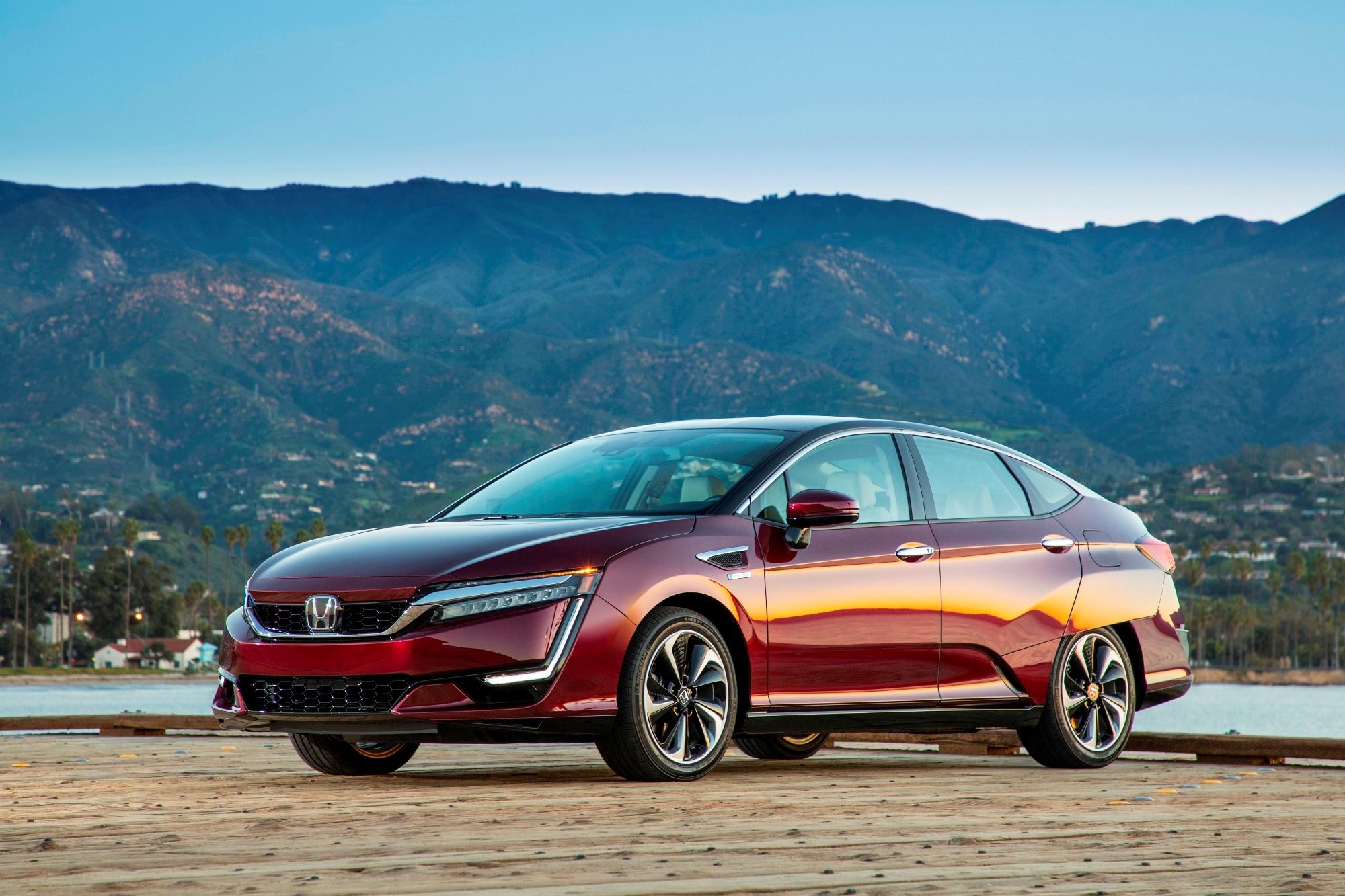2020 Honda Clarity Fuel Cell Review: Sometimes Electricity And Water Do Mix
In the race to deliver more eco-friendly vehicles, manufacturers have leaned towards hybrid vehicles that combine the efficiency of electricity with small and efficient gas engines, and let's not forget the rise of the electric vehicle. These two eco-friendly concepts dominate the market, but there is still a tiny segment that uses hydrogen fuel technology, including the 2020 Honda Clarity Fuel Cell. The idea makes sense: why not use the most abundant gas in the Earth's atmosphere to drive our cars? The Clarity Fuel Cell sedan is one of those cars and makes use of a 103 kW, 33-liter Proton Exchange Membrane Fuel Cell (PEMFC) to convert hydrogen into electricity and water. Power is sent to a single electric motor which develops 174 horsepower and 221 lb-ft of torque. The Clarity goes up against the Toyota Mirai and Hyundai Nexo, but a slew of hybrid and electric cars can also be considered direct competition.
Clarity Fuel Cell Exterior
Dimensions
| Length | Wheelbase | Height | Max Width | Front Width | Rear Width | Curb Weight |
|---|---|---|---|---|---|---|
| 192.7 in | 108.3 in | 58.2 in | 73.9 in | 62.2 in | 62.5 in | 4,134.0 lbs |
Clarity Fuel Cell Performance
Engine and Transmission
You won't find a 5.0-liter V8 engine chugging gas under the hood of the 2020 Clarity Fuel Cell; instead, you get a piece of alien technology that excretes water and electricity. The second generation of the Honda Clarity Fuel Cell nameplate uses a 103-kW 33-liter Proton Exchange Membrane Fuel Cell that converts hydrogen into these two resources. The electricity generated gets sent to a single AC electric motor producing 174 hp and 221 lb-ft of torque with a front-wheel drive system in place and a single-speed transmission. Initial acceleration is impressive but tapers off after 60 mph, meaning the Clarity is a car best used on city streets where it feels nippiest.
Clarity Fuel Cell Interior
Clarity Fuel Cell Trunk and Cargo Space
Warranty
| Basic | Drivetrain | Corrosion | Hybrid/Electric Components | Roadside Assistance |
|---|---|---|---|---|
| 3 Years / 36,000 Miles | 5 Years / 60,000 Miles | 5 Years / Unlimited Miles | 8 Years / 100,000 Miles | 3 Years / 36,000 Miles |
Verdict: Is the 2020 Honda Clarity Fuel Cell sedan A Good car?
The Honda Clarity Fuel Cell is visionary in terms of its powertrain and works exceptionally well in the real world but is let down by the simple fact that it is so specialized. Seeing as it's only available in California and on a lease-only basis already limits its success - although it does mean reliability isn't a worry for the leaser - and a small refueling network doesn't help either. We still love the concept and believe that hydrogen fuel cells could be a viable alternative to the wave of EVs coming out these days. As for the rest of the car, there are some shortcomings, such as an unintuitive infotainment system, a small trunk, and the fact that the powertrain runs out of breath when nearing 60 mph. The biggest threat facing the Honda Clarity is not other Hydrogen cell vehicles but the multitude of 'eco-friendly' alternatives saturating the market, and it's hard to review the 2020 Honda Clarity Fuel Cell without considering the abundance of fast-charging, long-range EVs already available.
What 2020 Honda Clarity Fuel Cell Model Should I Buy?
There's only one trim on offer for 2020, but don't worry; the Clarity Fuel Cell is a full-house deal and comes with a bunch of standard tech that is usually reserved for the options list in most other cars. Standard features on the Clarity include a leather-wrapped steering wheel, a 12-speaker sound system, a head-up display, and Android Auto and Apple CarPlay connectivity. Driver assistance tech is also included and consists of aids such as road departure mitigation, forward collision warning, lane keep assist, collision mitigation braking, lane departure warning, and adaptive cruise control. We'd spec the optional rear parking sensors for added peace of mind, which, considering the car is lead and not purchased outright, doesn't affect the price of the 2020 Honda Clarity Fuel Cell sedan too much on a monthly basis.

